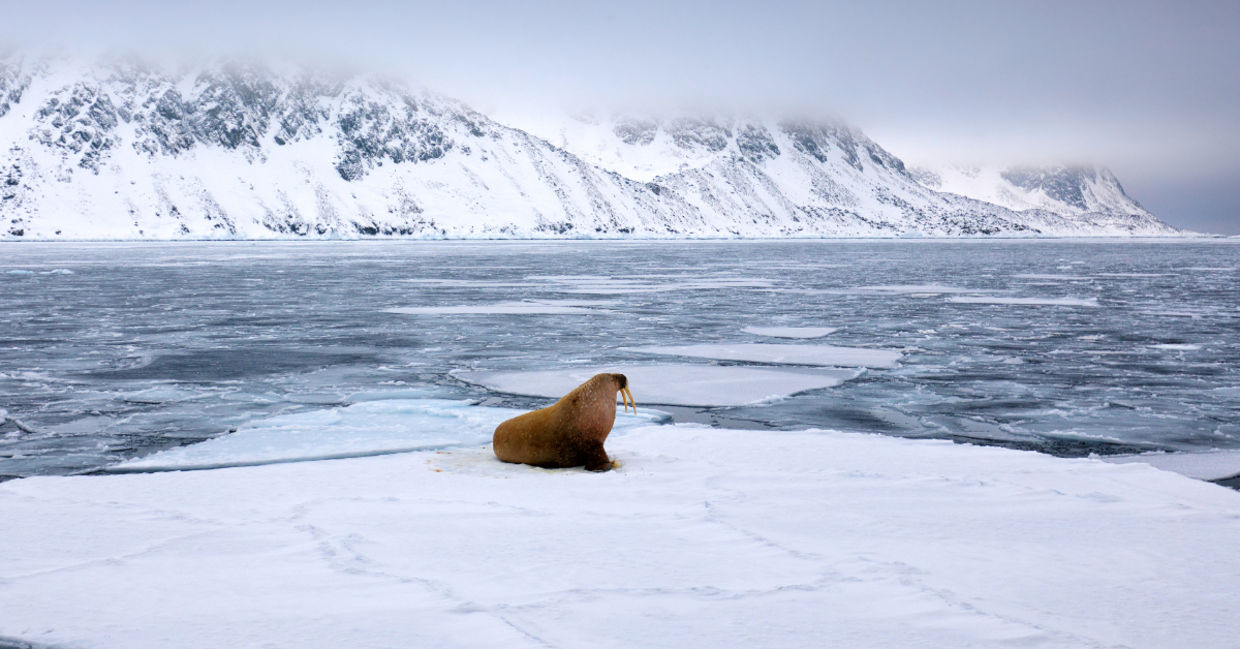
(Ondrej Prosicky / Shutterstock.com)
Walrus pups may look big and tough, weighing in at around 200 pounds. But these Arctic mammals are clingier than they look. According to CBS News, walrus calves, not unlike human toddlers, typically spend the first two years of their lives joined at the hip with their mothers.
That’s why, when workers discovered an abandoned walrus calf, far from its native habitat, the wildlife response team prescribed 24/7 cuddling, in order to nurse the baby back to health.
The rescue
According to the Pet Helpful website the background that led to the dramatic calf rescue and unusual, but adorable, calf therapy. Oil field workers in Alaska’s North Slope chanced upon the lonely infant walrus, with no mother in sight.
According to the Alaska SeaLife Center, not only was it strange that the calf didn’t have a mother walrus accompanying him, but his location was strange as well. The workers stumbled on the calf four-miles inland. Pacific walruses usually live on ice floes in the ocean or on its Western shore, and nobody could explain how this lonely calf had made it so many miles from Alaska’s Beaufort Sea alone.
The Alaska SeaLife Center, an organization that nurses stranded and injured Alaskan animals back to health, arranged for the 140-pound baby to be “medevaced” to the center. ConocoPhillips Alaska, an Alaska-based oil producer donated their airplane to carry the lost walrus
“ConocoPhillips is honored that we were able to assist with the rescue and transportation of the young walrus,” Erec Isaacson, the President of ConocoPhillips Alaska shared “This is an example of a network of caring neighbors who work together for the best possible outcomes. Alaska is fortunate to have an organization like the Alaska SeaLife Center where patients can be cared for by veterinary professionals.”
Just what the doctor ordered
When the walrus calf arrived at the Alaska SeaLife Center, veterinarians diagnosed it with a range of conditions, including dehydration, malnourishment, cloudy eye, and an infection. To nurse the pup back to health, the veterinary team ordered it to be bottle fed formula and to receive “round-the-clock cuddles.” As the Alaska SeaLife Center explains, walrus are outgoing creatures and are used to receiving lots of attention and touch. Moreso, baby calves typically spend their first two years of life in close contact with their mothers. In order to mimic the touch and attention that the walrus would have received in the wild, a team of “cuddlers” was put together from the Alaska SeaLife Center’s staff, in order to snuggle up with the cute, cuddly, and nearly 200-pound infant.
CBS News reports that nursing a walrus back to health was a rare occurrence for the center, which had only treated ten walruses in the last 25 years. "It isn't often that we're able to admit a walrus calf,” shared Jane Belovarac, the Alaska SeaLife Center’s Wildlife Response curator. “But every time we do, we learn more about the species and how to care for them.”
The global-warming connection
Even for non-Alaskan marine veterinarians there are other opportunities out there to help walrus calves grow up happy and healthy, up to their full 3,000 pound size. The abandoned calf was found inland of the Beaufort Sea. CBS News cites the Marine Mammal Commission which explains that walruses will migrate to these areas in years where there isn’t enough sea ice to support them offshore.
The journey to the shore and further inland, to communities called “coastal haulouts,” can be dangerous for baby walruses. The World Wildlife Fund explains. "Often, young calves do not survive the full journey. If they do make it to land, walruses are already fatigued by their travel, and in these locations, nearby food sources may be quickly exhausted. In addition, as walruses are easily spooked — by humans, vehicles, polar bears, or even small animals — they can trample one another in a stampede to the sea. Tragically, many walruses, particularly young calves, die in these stampedes."
Although this walrus calf’s story turned out cuddly and heartwarming, the general trend of global warming and rising sea temperatures may threaten future walrus calves. Concerned citizens can help walrus babies thrive even without medevacing and cuddling up to them, just by taking care of the earth and reducing their personal carbon footprint.
YOU MIGHT ALSO LIKE:
Become a Walrus Detective
The Arrival of a Wandering Walrus Causes a Splash
Bottlenose Dolphin Moms Speak to Their Calves in Baby Talk







